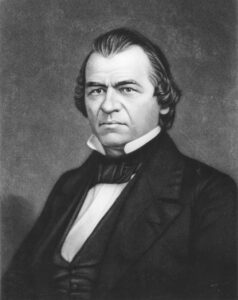Reconstruction: Trying to Rebuild a Broken Nation
Reconstruction was hard – but it was the price to be paid for war between the states.
By: GenZ Staff | July 1, 2020 | 675 Words

Abraham Lincoln (Photo by Katherine YoungGetty Images)
The American Civil War was the bloodiest war the United States has ever fought. After the war ended, Republicans in the federal government felt it was their duty to bring the rebel states back into the Union and rebuild them. Many also wanted to punish them. This began the period known as Reconstruction, which occurred in three phases.
Lincoln’s Plan
On December 8, 1863, President Abraham Lincoln announced his Proclamation of Amnesty and Reconstruction. First, his proclamation allowed for a full pardon and return of property for everyone who had been a part of the rebellion, except for the Confederate leaders. It also allowed states to form new governments once 10% of voters had sworn allegiance to the United States.
Lincoln hoped for a quick reunification, but he was killed on April 14, 1865, and his plan did not live on after him.
Presidential Reconstruction and the Black Codes

President Andrew Johnson (Photo by PhotoQuest/Getty Images)
Vice President Andrew Johnson was a Southern Democrat, but also a loyal Unionist. Johnson took over as president and announced his plan for Reconstruction. In his view, the Southern states had never given up the right to govern themselves. He returned all land confiscated by the Union Army to its previous owners. Other than swearing loyalty to the Union, paying war debt, and ratifying the 13th Amendment, which abolished slavery, the South was free to rebuild itself under Johnson.
While Johnson’s hands-off approach respected liberty and states’ rights, the Confederate Democrats regained power over much of the South and passed laws known as the black codes. These restricted the freedoms of black people, forcing most of them to keep working for their former masters. The black codes angered many in the North, including some members of Congress called the Radical Republicans. Congress passed a couple of bills to protect blacks in the South, but Johnson vetoed them. They passed the Civil Rights Act in 1864 and overrode Johnson’s veto, making it the first bill to become law despite a presidential veto.
Radical Reconstruction
The Radical Republicans won control of Congress in 1866. Congress passed the Reconstruction Act of 1867, again over Johnson’s veto. This divided the South into five military districts, each controlled by a general in the Union Army. To rejoin the Union after the end of the war, each Confederate state now had to send new representatives to Congress and form new state governments with new constitutions. Each state would also have to ratify the 14th Amendment. These new requirements were in addition to what already had to be done under Lincoln and Johnson.

Ulysses S. Grant (Photo by Library of Congress/Corbis/VCG via Getty Images)
Congress impeached President Johnson in 1868. This was the first impeachment of a president, and Johnson escaped being convicted in the Senate by a single vote. In the election of 1868, Ulysses S. Grant, a Republican and Union general, became president.
The Compromise of 1877 and the End of Reconstruction
After Grant finished his second term, things became complicated during the election between Republican Rutherford B. Hayes and Democrat Samuel J. Tilden. For the first time in American history, one candidate won the popular vote and the other won the Electoral College vote. Not knowing how to move forward, Democrats and Republicans created the Compromise of 1877. Hayes, who had won the electoral vote, would become president. In return, Republicans had to do four things. First, they had to pull all federal soldiers out of the South. Then Congress had to pass laws that would help the South rebuild its economy. Hayes would have to appoint Southern Democrats to important positions in the government. Finally, he would have at least one Democrat in his cabinet.
Once the military was gone, Southern Democrats began, once again, passing laws that restricted the liberty of black people and kept them separate from whites. Reconstruction came to an end, and – despite all that had been done to ensure equality – the South remained mostly segregated until the 1960s.
















